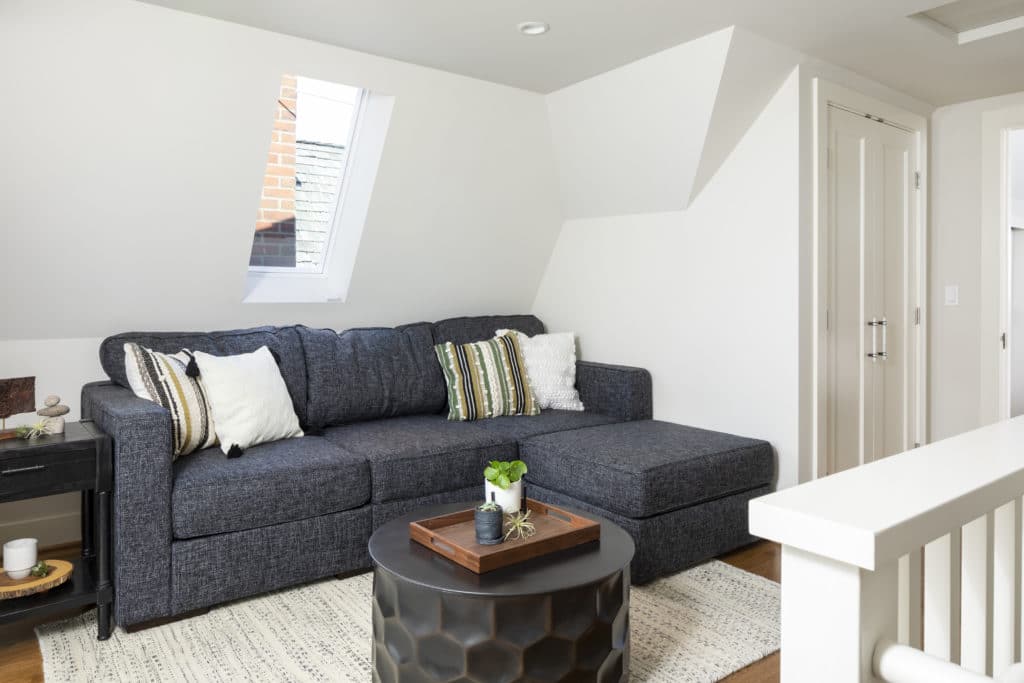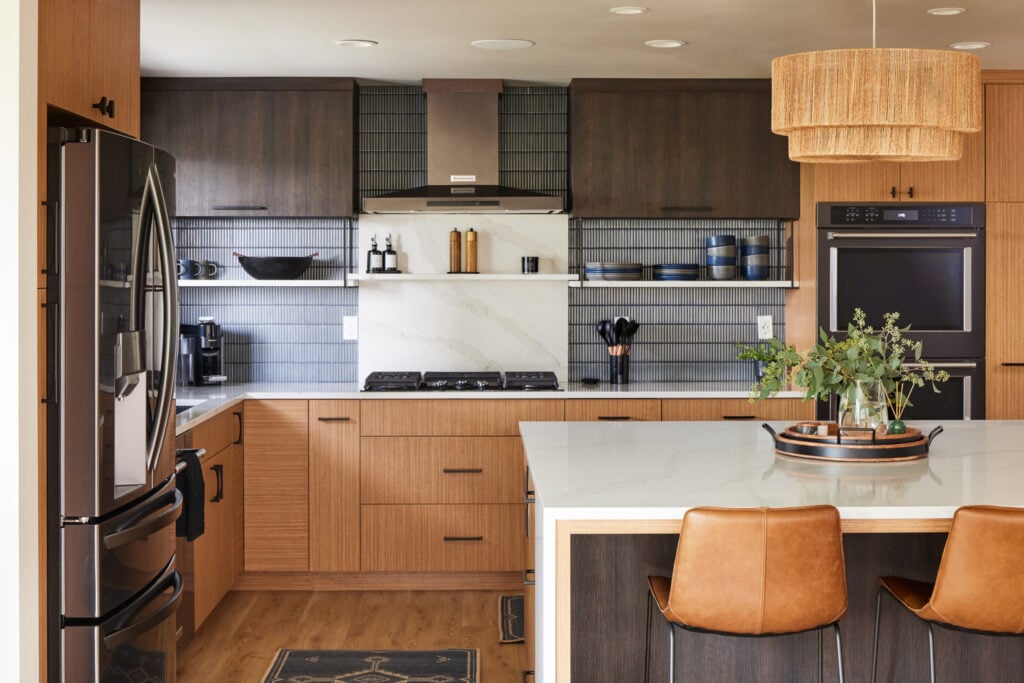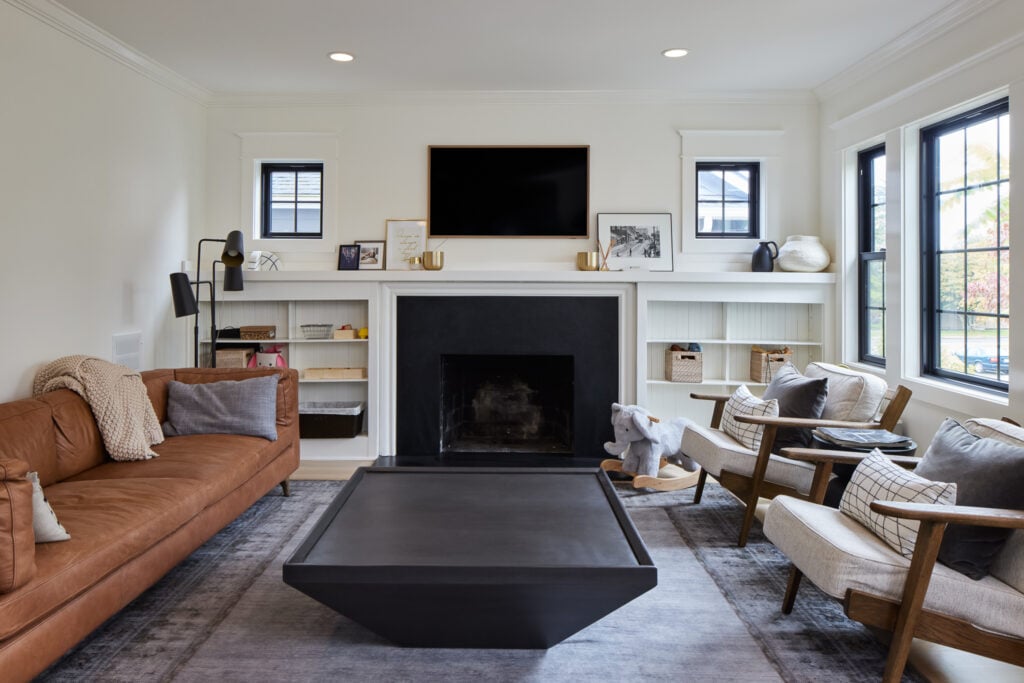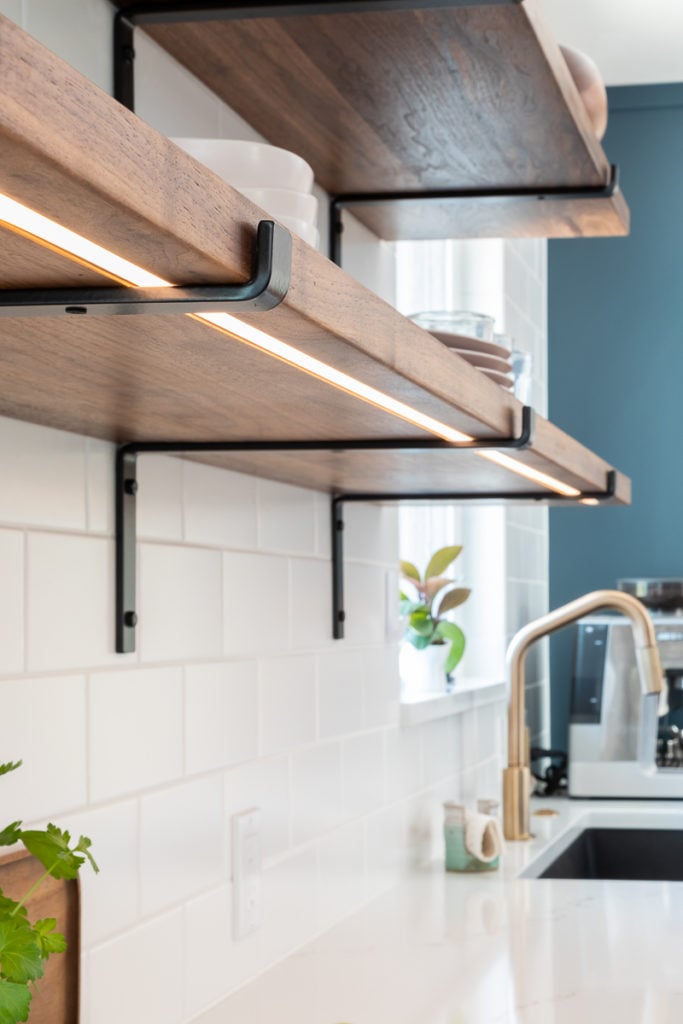In an era of single-use plastics and cheaply made furniture, there’s a rising tide of companies, designers, builders and homeowners who are pushing for environmental change. Everything, and we mean everything, in your home has an eco-friendly version! It’s up to you to find it and choose it.
That’s no small feat, so we’ve developed a list of some of our favorite eco-friendly interior design swaps. From paint to rugs and everything in between. If you’re looking to update your interior design and include more sustainable options, this list is for you.
Sustainable Home Flooring: Bamboo, Cork, Reclaimed Wood & More
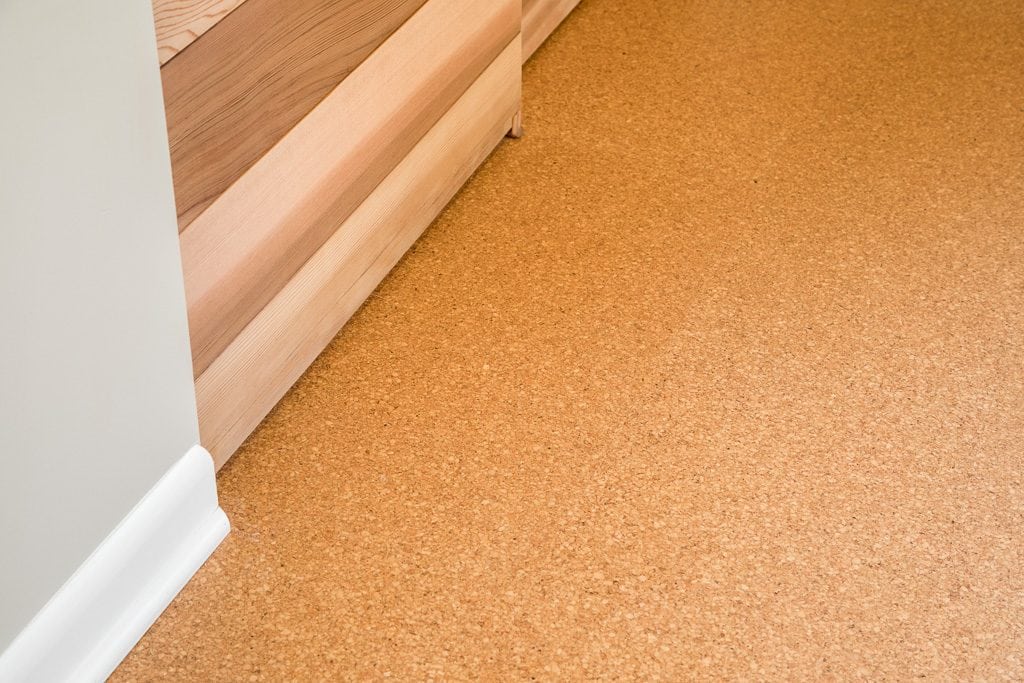
One of a home’s most costly and material-heavy elements is flooring. Whether you choose beautiful, wide-plank hardwoods or a colorful linoleum, there’s an sustainable version out there. With wood, you’ll want to ask questions from the seller or manufacturer about how the wood was sourced and if it comes with any third-party certifications such as FSC-certified. FSC, also known as the Forest Stewardship Council, is an independent, not for profit organization established to promote the responsible management of the world’s forests.
If you’re choosing tile, you can always look for makers that use recycled content. Better yet, look for companies like Fireclay Tile that are certified B Corps—meaning they’ve holistically built their company to be more sustainable and better for the world.
If you’re not sure what flooring you want, consider some less popular but highly sustainable flooring options such as: cork, bamboo, wool carpet or a salvaged product. Salvaged barn wood is not only keeping usable wood out of the landfill, but it’s also extremely unique and comes with a story! It’s one of our favorite ways to add character to a home during a remodel.
No-VOC or Low-VOC Paint
The reason a room smells so bad after painting is because: it is. When you paint with low-grade paint, chemical compounds are released into the air as it dries. Some volatile organic compounds (VOCs) are harmless, while others can irritate your airways and have been shown to cause cancer. Even if no one in your household has allergies or sensitivities, it doesn’t hurt to use a low-VOC paint. It may cost a few dollars more, but it will ensure that toxic smell doesn’t stick around. Off gassing from paint can last anywhere from a few weeks to many months.
An interior designer can help you navigate the many, many paints on the market to find the best quality. Some of our favorite paint brands like Sherwin Williams and Benjamin Moore offer no-VOC products, but home improvement stores often stock a few premium paints too. ECOS Paint is a great online vendor for non-toxic paint, and you can even order free samples to be delivered to your door.
LED Lighting

When purchasing a new lamp or light fixture, the last things on your mind is probably energy efficiency and end-of-lifecycle disposal. Taking a few extra minutes to consider these two important factors is crucial to having smart, sustainable lighting. On average an LED bulb consumes 80% less energy than its outdated predecessor and lasts 25x longer. LEDs also have significant energy savings over CFL bulbs (the ones that have a corkscrew shape). With every new light fixture in your home, you could actually be saving energy and money in the long-run.
Also, remember to look for light fixtures that do not have an integrated lightbulb. Integrated lights have light bulbs that are built into the fixture, and cannot be replaced once they burn out. They’re not sustainable at all. This is especially common in outdoor home lighting, but some indoor lights can be integrated as well. Though LED lights can come with a year warranty or claims that the bulb will last 10 years, eventually that light fixture is going to end up in the trash. Look for a light that will keep on shining for many more years with replacement bulbs.
Vintage, Thrifted or Repurposed Furniture
The most eco-friendly decision you can make is to reuse an existing item. For every item you thrift, you save countless new raw materials from being harvested. You also reduce the energy and materials needed to manufacture and transport those new goods to market—that’s a lot of energy and gasoline saved! Prioritize searching for furniture at vintage, thrift and reuse stores—you’ll be pleasantly surprised. Not only can you score some amazing deals, you can also find furniture that is one-of-a-kind.
If you can’t find exactly what you’re looking for, don’t get discouraged. Fixing up or transforming furniture is easier than you think. Many times it only takes a light sanding, a new paint color and some modern legs to completely transform an antique dresser into the trendy dresser of your dreams. You can find ingenious tutorials online to guide you.
Recycled Countertops

Yes, you read that right. Countertops made of recycled materials are a thing! Two of our favorite recycled countertops are PaperStone and Vetrazzo.
PaperStone is created from 50-100% recycled paper and a non-petroleum resin. Manufactured in Washington State with 100 percent made-in-the-U.S. raw materials, most PaperStone products are certified recycled by the Rainforest Alliance to the Forest Stewardship Council® (FSC) standards. If you think paper could never be a durable countertop option, you’re not alone—but, you have to hold it in your hands to believe it. It like a smooth slate, is non-porous, comes in a variety of colors and is very durable. It’s perfect for lower-traffic areas such as the laundry room or a powder room.
Vetrazzo recycled glass countertops are made by hand in Georgia. A slab can be made of 100% recycled glass, but many are approximately 85% of the final material—a significant amount. The countertops use all sorts of specially selected glass: jars, windshields from cars, architectural glass from skyscrapers, pre and post-consumer glass from curbside recycling and more! The products range in colors and size of the glass particles, so you can find a look that fits your style. Waste turned into a sustainable material… genius!
Eco-Friendly Home Décor from Popular Retailers
A little-known design tip is to look for eco-friendly sections at your favorite home goods stores. Sustainable design is gaining traction and becoming more mainstream each year. Pottery Barn has an entire Sustainability Shop on its website. Likewise, West Elm offers a Sustainably Sourced filter on its website for items that are FSC®-certified, recycled or upcycled.
Or, if you’re looking for a more custom product, you can find makers that source sustainably, fair-trade and/or are B-corp certified. Examples include The Joinery for furniture, Coyuchi for bedding and Cisco Home for seating.
Natural Rugs & Carpeting

Sorry to pull the rug out from underneath you, but not all rugs and carpeting are created with the planet in mind. The majority of rugs today are made of plastic, typically polypropylene (labeled as Polyester). On top of that, many are treated with harsh chemicals to repel water and prevent stains. What you’ll want to look for instead is floor coverings made of natural fibers like wool, sisal, organic cotton, seagrass and jute. They may come at a premium price, but they’re certainly less toxic.
In addition, natural floor coverings are biodegradable. At the end of their useful life, which should take a long, long time, they will more quickly biodegrade without releasing anything toxic into the ground.
ENERGY STAR Appliances
Whenever you’re searching for a home appliance, look for one that is ENERGY STAR certified—the one with the little blue sticker. You’ll save money on operating costs by reducing energy use, which is so much better for the planet. The ENERGY STAR tag will tell you just how much savings and energy use reduction you can expect. Sometimes the difference between appliances is small, but sometimes you’d be surprised just how inefficient certain appliances can be. Even luxury brands you’d think we’re eco-friendly are in fact quite the opposite, but you can have both beauty and energy-efficiency in one. A favorite of ours is the GE Café series kitchen appliances.
Sustainable Interior Design & Green Remodeling
The at Model Remodel is well-versed in sustainability and green design. We care about the environmental impact of home building and are constantly learning about new products and methods to make our projects more eco-friendly. We recycle hundreds of tons of C&D materials each year. We use as many eco-friendly paints, caulks, and adhesives as possible. We choose products that release no or low-level emissions into the air. We use LED lightbulbs and fixtures whenever possible because they’re more energy-efficient.
In addition to these standards, we also excel at green building. Our interior designers and carpenters work together to certify Built Green projects every year. These projects value energy-efficiency, indoor air quality and insulation, as well as less obvious aspects of sustainability—such as reclaimed materials or creating a plan to save trees during construction.
Sustainable interior design and green remodeling is always something we are happy to explore with our clients!

